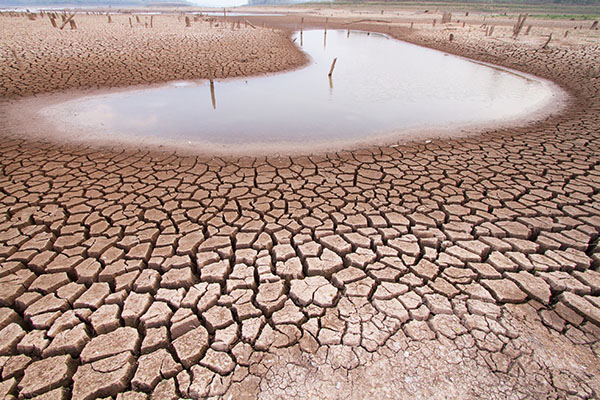
As a prepper, you need to be a frugal spender. You can also be thrifty with your preps, like harvested water.
With some additional tools, you can use rainwater to make an outdoor shower for your homestead. (h/t to PrimalSurvivor.net)
Why build an outdoor shower?
If you have harvested water and an outdoor shower, you can clean off garden debris and dirt from other outdoor activities before entering your home. And when SHTF, an outdoor shower can be a godsend if you run out of water.
It's fairly easy to make an outdoor rainwater shower, but you need to consider several important factors before you get started:
- Can you keep the water clean?
- Are there legal requirements for the shower?
- Do you need a permit for your project?
Legality and permits
Rainwater showers are usually legal, but some states have laws that only allow rainwater to be used for irrigation. If you live in one of these states, it may be legal to use a rainwater shower if you meet stricter standards for water quality and plumbing. In most cases, you don't need a permit for an outdoor rainwater shower. They're also usually exempt from building, zoning and plumbing code requirements. Note that you may need a permit and have to meet codes if your rainwater shower comes with a permanent structure, drains, or hot water connections. Always consult your county or city because rules may vary depending on the area.
Safety considerations
It's safe to use harvested rainwater for showering and bathing. In fact, rainwater is soft and doesn't contain chlorine, making it safer for your skin and hair. Just make sure rainwater doesn't get stagnant in barrels because your supply might develop algae. Even if algae isn't that dangerous to your health, it can make your showers unpleasant. (Related: Prepping 101: How to store water for emergency preparedness.)
Make sure your rainwater harvesting system has pre-treatment methods that will filter leaves and debris out of the collected water, such as:
- First flush diverters – This system helps channel the initial rainwater away from your storage container. Diverters will flush away any leaves and debris on your rooftop so the water that you collect is clean. This kind of system uses a pipe with a cap at the end. When the pipe is full, a flapper closes and the rest of the rainwater goes into your collection system.
- Gutter screens
- Rainwater harvesting system filters – There are several kinds of filtration systems for your rainwater collection system like a basket, cascade, pot, filters, vortex and DIY filters.
- Screens over barrel inlets
If you use rainwater to shower immediately after harvesting, it should remain clean. If you plan to store rainwater for longer periods of time, treat it with bleach.
Follow the steps below to treat water in rain barrels with bleach:
- Always use unscented bleach at five to six percent strength with no other additives.
- Add 1/8 teaspoon (eight drops) of bleach per one gallon of water.
- Wait at least 24 hours before using the treated water.
Setting up a simple outdoor rainwater shower
Follow these basic instructions to set up an outdoor rainwater shower.
Choose between a gravity or pump-powered shower
Gravity-powered rainwater showers have a tank that hangs overhead. Since this type of shower has no moving components, they are affordable and easy to maintain. However, gravity showers will lose pressure as they empty. They can also be difficult to hang since they can become too heavy.
On the other hand, pump-powered rainwater showers have a pump that brings the water from the tank to the showerhead. If you're on a tight budget, get a cheap battery or foot-powered pump. If you have extra money, you can buy a more complex electric pump with high pressure. Pump showers are more expensive, but with this type of shower, you don't have to worry about lifting heavy shower tanks overhead.
Choose the best location for the rainwater shower
When choosing a location for your outdoor rainwater shower, you need to consider drainage. In some areas, buildings don’t allow you to have outdoor showers that drain into streams or places where the water will create a nuisance. If you have a gravity rainwater shower, you will need a strong structure nearby, like a tree with sturdy branches, so you can hang the shower tank.
You can place a pump-powered shower almost anywhere, but note that the pressure decreases the further it is from the tank.
Build a platform
Without a sturdy platform, the rainwater from the shower will fall directly on the ground and make a muddy mess at your feet. Prevent this by building a platform with good drainage. Do this by playing a layer of round stones on the ground and setting a wood platform with slats above the rocks.
Set up a privacy screen
Ensure your privacy by purchasing a privacy screen for camping. These things are also suitable for rainwater showers. Alternatively, you can make a DIY privacy screen. You'll need PVC pipes and elbow fittings. Once you're done with the structure, hang a shower curtain on it for privacy.
Choose a shower reservoir and head
You can pump water directly from your rainwater harvesting barrels for showering, but in some cases, this isn’t practical because you’ll be limited to where you can put the shower. If your rain barrels aren't elevated, you'll need to use a pump.
Make things easier for yourself by storing the rainwater in a separate reservoir. Use the spigot on a rain barrel to fill up a camping solar shower. Keeping the shower water tank separate from the main rainwater tank makes your system more portable. You can also heat up the water faster in a small tank.
There are different rainwater shower reservoirs to choose from. For example, you can either get a simple camping-type shower or a shower with a built-in heater and adjustable pressure heads. Make the most of your harvested rainwater by building an outdoor rainwater shower. But before you start setting up the shower, check if there are any legal requirements for your area or if you need a permit for the project.
Visit Preparedness.news for more articles about other useful prepper projects.
Sources include:
Please contact us for more information.























